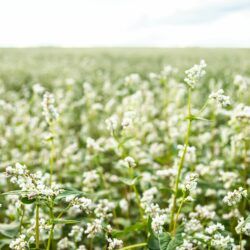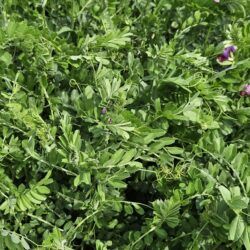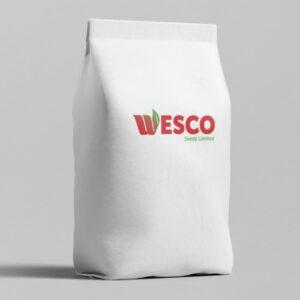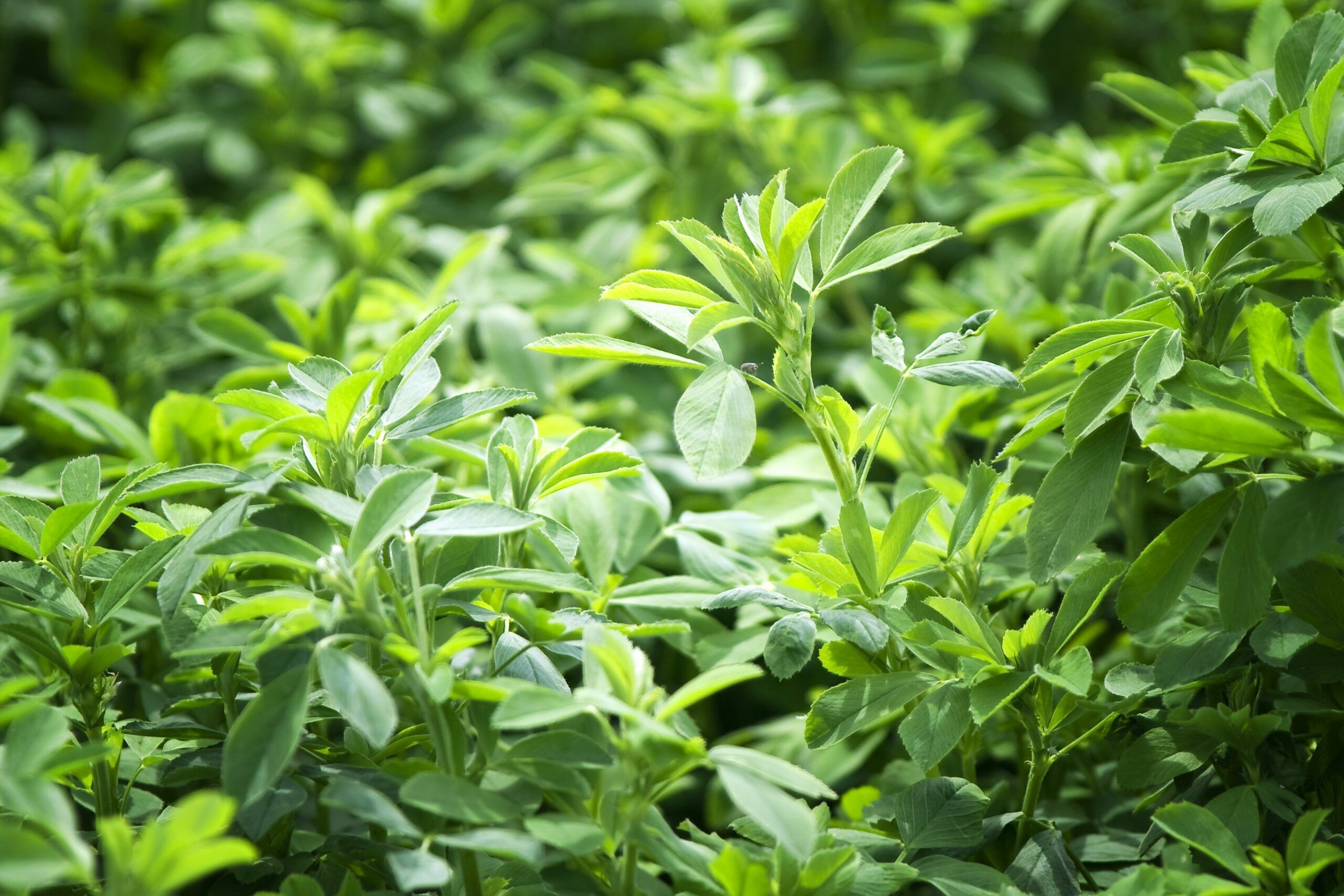Q31
Q31 Lucerne as a cultivar has a superior leaf protein content and makes premium supplements of hay, silage and chaff for stock feed. As lucerne, it is a deep tap-root perennial plant with an upright growth that is well suited to grazing in sheep, beef, deer, and dairy systems. Compositionally, Q31 has a large leaf size, with numerous tillering, and finer stems than other varieties. The plant crown is below the ground. The leaves are clustered in threes and are oval to wedge-shaped, forming pointed leaflets, normally with white crescent-shaped markings.
$24.95 – $28.45 excluded GST
Description
Lucerne is a deep tap-rooting perennial plant with a high feed quality that is well suited to grazing in sheep, beef, deer, and dairy systems. A soil pH greater than 5.8 is required for good growth. For best results, we recommend that soil molybdenum or boron deficiencies needed to be addressed to avoid limiting nitrogen fixation and plant growth. Lucerne is well suited to supplement ryegrass-based dairy pastures in drought-prone areas like the east coast of New Zealand. For best results high soil fertility is required and has a low tolerance to heavy soils. Q31 Lucerne has a very high tolerance to drought conditions and establishes relatively easily, provided pests are managed. Highly productive, it grows all year round and responds quickly to spring/summer rainfall or irrigation.
It performs best when established in high fertility, free-draining soils, with a pH greater than 5.8. To enhance Lucerne growth as a legume soil molybdenum or boron, deficiencies need to be addressed to avoid limiting nitrogen fixation and plant growth. It is intolerant of high levels of exchangeable aluminium and even short periods of waterlogging. Has a moderate tolerance to soil salinity and sodicity.
It is well suited to supplement ryegrass-based dairy pastures in drought-prone areas like the east coast of New Zealand.
Additional information
| Treatment | DYNASTRIKE, GOLDSTRIKE, UNTREATED |
|---|---|
| Q31 | 100% |
Cultivation
Q31 with increased tillering and finer stems produces premium feed and supplements. Along with being a high-quality option it also provides flexibility in cutting times.
Weed burden
In instances where a serve weed burden occurs after sowing this can be combated with a single hard grazing, when the Lucerne is about 15cm in height will effectively control most annual weeds.
Grazing management
As a rule, Lucerne should not be set-stocked. Grazing is best not to exceed 10 days and spelling between grazings should not be less than 24 days.
Seedling crop (first year)
The first grazing should occur when at least 50% of the stems have an open flower to encourage the growth of the plant’s tap root, and to set up the root reserves for the second year.
When early flowering the crop can be grazed rapidly with large numbers of animals for up to 5-7 days. However, don’t re-graze until the regrowth is at least 30cm high again. The number of grazing possible in the first year will be determined by the time of sowing and the soil moisture levels.
Regrowth crops (Years 2 – 10+)
Under irrigation in regions like Canterbury high yields can be achieved (up to 28tDM/ha), however, the quantity will vary with temperature, rainfall, and soil conditions. For best results, all “end-of-season management” like final winter clean-up grazing and weed spraying should be completed by the end of June. The crop can then be left ungrazed until there is approximately 30-40cm of new spring growth. This will be sometime between the 3rd week of September or into early October in colder areas depending on climate and temperature. Grazing prior to this has the potential to remove the newly developing buds and nodes that dictate the spring yield potential of the crop. Their removal can delay the spring grazing or cut the supplement by over a month and reduce the overall yield. Allowing the stand to grow higher than 35-40cm can also have the adverse effect of lodging so the aim is a compromise between the ease of harvesting and maximising the crop yield.
The first spring crop does not need to flower before harvest. If grazing, we recommend break fencing or stocking at a rate that removes the herbage in 5-10 days. The advantage of doing this is that allows light into the plant’s crown and stimulates the formation of new basal buds that will become the stems for the next rotation.
In subsequent spring/summer grazing, the timing is a compromise between yield and quality. While in a vegetative growth phase, approximately equal proportions of stem and leaf are produced. As the flower buds become visible the proportion of the stem will start to exceed the leaf and while the DM will be increasing it will be at the expense of quality. Flowering signals the formation of new basal buds forming and the recommendation is that grazing should occur when about 1% of the stems have an open flower.
Grazing earlier will result in a higher quality but a much lower yield. Comparatively grazing or making supplements later will maximise yield but there will be a higher proportion of fibrous flower stems that are normally unpalatable to stock.
Dryland sheep grazing
To achieve the maximum post-weaning live weight gains it is recommended to graze lambs solely on Lucerne for a minimum of 6-8 weeks. This can be managed by fencing to a 5-paddock rotation allowing 6-10 days of grazing and 24-40 days of regrowth.
To maintain the quality of a Lucerne, stand ideally lambs are grazed first that will selectively eat the leaf and top of the stem, and they are followed by hoggets or ewes to clean up the remaining stem. The grazing interval is shortest in the summer months when the warmer days and longer day length result in a rapid onset of flowering.
Early Autumn grazing – February/March
Autumn grazing is best deterred until at least 50% of the stems have an open flower. As during this time, a higher proportion of the sugar metabolised from photosynthesis is stored in the roots. The purpose of these reserves is to assist Spring regrowth in the following year. Additionally, any regrowth in April/May should be left to grow until the colder temperatures and frosts stop growth in winter.
Weed and pest control
Stands can be well protected with a single, hard, early winter grazing (preferably before the soil is soft and wet) this removes any pests like overwintering aphids and weeds prior to them maturing. In most districts, this can be done in June with any additional weed control completed prior to the end of June with the crop able to be left until the first spring rotation when about 35cm high.
Animal health considerations
Lucerne stores sodium in its roots which results in a deficiency in the herbage so depending on soil levels alternative sources (like salt licks) may need to be provided. In cattle, Lucerne can cause bloat, and red gut can be a problem in lambs. If the Lucerne stand is particularly plagued with leaf diseases, aphids, or severe moisture stress this can cause elevated oestrogen levels in the herbage and should not be grazed by ewes immediately prior to, or during mating.
Lucerne feed supplements (hay and silage)
Making lucerne supplements is a compromise between quality and quantity, the yield will increase by delaying the harvest, but the stem thickening will make harvesting and drying more difficult and reduces the quality.
The leaf herbage contains high levels of protein and has a M/D value of 11.5 or better while the stem could have less than 15% protein and a M/D value of less than 9.0 at the same time. The optimum dry matter (DM) content for baling is 80-85% (or 15-20% moisture) the importance of rapid moisture loss is therefore detrimental to leaf quality.
The differential drying of leaves and stems means that the leaves dry more quickly and can be lost during the process of raking and baling. The losses can be mitigated by using a conditioner or crusher at the time of cutting to squash the Lucerne stems and effectively increases the rate of moisture loss. Also, moisture loss can be minimised by raking or baling when a light dew is on the leaves.
Greater control of the forage quality and time of harvest minimising moisture losses can be achieved by making silage. One issue can be that the high protein content in lucerne reduces the amount of sugar available for the ensiling process. This process can be enhanced by leaving Lucerne to wilt for at least 4 hours (to 35% DM) and using additives such as molasses, cereal grain or an inoculant to accelerate the fermentation process.
Continuously using the same Lucerne paddocks for supplements can result in potassium deficiencies and annual monitoring is recommended.
Sowing Rate
Spring sowing
Lucerne is traditionally spring sown, especially in the South Island where it is sown from late September to the end of October to avoid damage from late frosts and promote seedling establishment before the soil surface dries out.
Summer sowing
Lucerne can also be established after a summer fallow.
Autumn sowing
When established in Autumn seedlings are more susceptible to damage from grass grub, an appropriate insecticide may be necessary along with an increase in the recommended sowing rate.
A sowing depth of between 5 – 11 mm is recommended, along with a firm seed bed.
To consider is that a break of one-year between Lucerne crops helps to reduce the carry-over of diseases and weeds from the previous crop and will also allow time to break down any chemical residues that may cause “autotoxicity”.
Normally Lucerne is sown in pure stands, although in wind-prone areas mixes with low rates of grasses such as cocksfoot, Phalaris or prairie grass can help to prevent soil erosion.
For deer, low seedling rates of herbage cultivars chicory and/or plantain add variety and “browse quality” to the stand.
Recommended sowing rate 12-16 kg per hectare for pure stands.
Price Table
| Treatment | 500 kg + | 100 – 500kg | 10 – 100kg |
|---|---|---|---|
| Untreated | $22.95 | $23.95 | $24.95 |
| Dynastrike | $24.45 | $25.45 | $26.50 |
| Goldstrike | $26.45 | $27.45 | $28.45 |
All prices are excluded GST. Minimum order 10kg.
Related products
-

Buckwheat
$5.30 – $6.90 excluded GST This product has multiple variants. The options may be chosen on the product page -

Hairy/Standard Vetch
$5.95 – $7.55 excluded GST This product has multiple variants. The options may be chosen on the product page -

Rahu Ryecorn
$3.10 – $4.70 excluded GST This product has multiple variants. The options may be chosen on the product page
